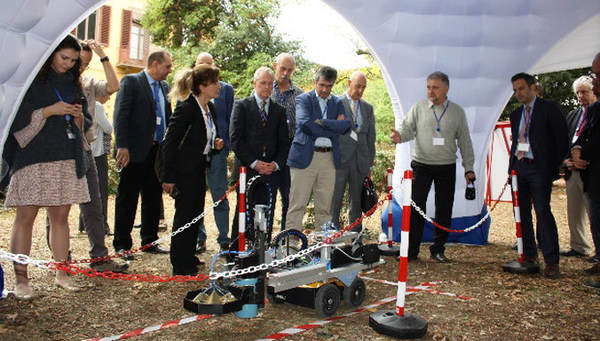
Three new Nato scientific technologies designed to detect and clear improvised explosive devices (IEDs) have been successfully tested in Florence, Italy.
Developed in the framework of Nato’s Science for Peace and Security (SPS) Programme, the three technologies include a semi-autonomous robot for mines and IED detection, a lightweight mine detector, and a handheld detector for dirty bombs.
The scientific projects were demonstrated and evaluated during a two-day workshop organised by the alliance in collaboration with the University of Florence.
University of Florence professor and Holographic and Impulse Subsurface Radar for Landmine and IED Detection project co-director Lorenzo Capineri said: “Participants diffused the results of their work, compared the developed methods and found possible synergies to increase the technological readiness level of the sensors, the electronics systems and the detection methods of these projects.”
Using new impulse radar and 3D data for real-time detection, the semi-autonomous robot can be deployed to prevent casualties during explosives detection.
Named ‘U-GO First’, the robot was developed by a project coordinated by Italy, the US and Ukraine.
How well do you really know your competitors?
Access the most comprehensive Company Profiles on the market, powered by GlobalData. Save hours of research. Gain competitive edge.

Thank you!
Your download email will arrive shortly
Not ready to buy yet? Download a free sample
We are confident about the unique quality of our Company Profiles. However, we want you to make the most beneficial decision for your business, so we offer a free sample that you can download by submitting the below form
By GlobalDataDeveloped by a project co-led by Norway and Ukraine, the easy-to-use and cost-effective handheld ultra-wideband (UWB) mine detector was manufactured through 3D printing.
The handheld device to detect dirty bombs can be primarily used to safeguard ports and enhance border security.
This project has been jointly developed by Australia, Croatia, Japan, Portugal and Slovenia.
Nato emerging security challenges deputy assistant secretary-general Robert Weaver said: “Without adequate regional and international cooperation, it would be impossible to address the variety of issues relating to threats from explosives today.”
The two-day workshop was attended by more than 50 scientists and experts from 16 Nato allies and partner nations.
In October last year, the Nato SPS Programme collaborated with Algeria on a multi-year research project for the design and development of a detection system that would provide protection against threats posed by terrorists.







